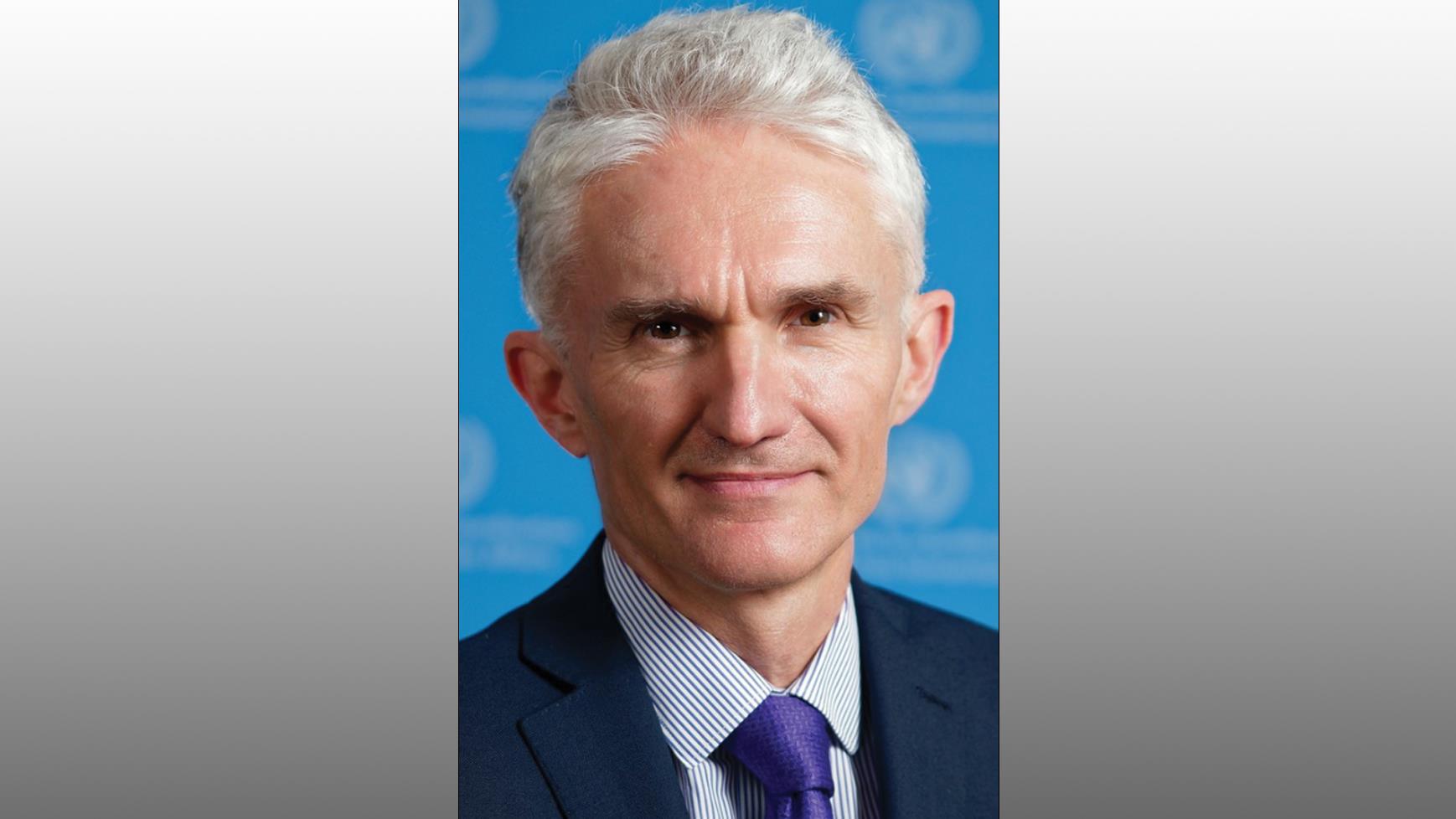Interview with Mark Lowcock

Under-Secretary-General for Humanitarian Affairs and Emergency Relief Coordinator, United Nations Office for the Coordination of Humanitarian Affairs (OCHA)
The number of hungry people keeps rising, and the COVID-19 pandemic has exacerbated inequalities. What do you think are the key elements necessary to avert a famine now but also prevent it in the future?
The world is facing its worst hunger crisis for decades. Unless we do something about it now many lives will be lost and we will face a far bigger problem for decades to come. And as always, the most vulnerable will pay the biggest price – women, children, the disabled and the elderly. We need to take swift, coordinated action to provide food aid and other essentials, and to stabilize and increase local food production. For that, immediate funding is required. Within the humanitarian system, we are doing what we can to meet growing needs. But humanitarian agencies are in danger of being overwhelmed by the sheer scale of those needs. We also need to address the long-term issues that are driving people to the brink of famine, including the climate crisis and conflict. This is why the UN Secretary-General’s call for a global ceasefire is so important. And why we must unite and take bold climate action to limit global temperature rise to 1.5 degrees Celsius and adapt to the changes to come.
What do you think are the key things the international donor community needs to know about the approach of taking anticipatory action ahead of crises? And how can they better support it?
The traditional approach to dealing with humanitarian crises has been to watch disaster and tragedy build, then decide that we need to respond, then mobilize money and organizations to help, and only then to start to get help to the people who need it. It is a reactive approach. It saves many lives. Taking an anticipatory approach produces better, faster and cheaper results. It is more dignified for the people we are trying to help and it protects hard-won development gains. There are several ways donors can support this. We need to make much greater use of disaster risk insurance in vulnerable countries. We need to use pre-agreed, contingency financing from the multilateral system which gives countries access to grants or loans at concessional rates to finance emergency response and reconstruction. And we need more of the grants made to humanitarian agencies to be unearmarked and flexible.
During your time in the ERC role, what has been your most positive collaboration with FAO? What do you think it is that gives FAO a special role in fighting acute food insecurity in humanitarian crises?
FAO and OCHA have long been partners and collaborators. Qu Dongyu and I worked closely in 2019 to successfully avert famine in Yemen. We collaborated again last year to deal with the desert locust crisis when my office supported the FAO’s important work with $10 million from the UN’s Central Emergency Response Fund (CERF). In fact, CERF is the second-largest donor to FAO’s humanitarian programme. As the pandemic upended the lives of subsistence farmers, agricultural laborers and pastoralists, CERF funding supported FAO’s work to stabilize incomes and access to food in several countries. FAO is uniquely placed in the UN system. It has one foot in the humanitarian system and the other in development. It not only provides emergency assistance but makes long-term interventions to address the root causes of hunger and poverty. The work of the FAO has never been more important.
We see the current state of the world and the increase in conflict and crises, as you come to the end of your term as ERC, what gives you hope?
The pandemic has hit hard. Humanitarian needs have never been higher and the challenges the humanitarian system face are huge. Today one in 33 people worldwide needs humanitarian assistance or protection and almost 80 million people are displaced by conflict and violence. The outlook is bleak. But when it comes to the power of the humanitarian system to meet these challenges, I remain optimistic. The global humanitarian system – the tens of thousands of people round the world working for NGOs, Red Cross and Red Crescent organizations and the UN – is a remarkable public good. It is overwhelmed and over-stretched. It needs more funding. And there are undoubtedly ways it can be improved. But if the system and its supporters stay committed to making it even stronger, smarter and swifter, it will continue to save and transform lives, and protect hard won progress, for decades to come.
